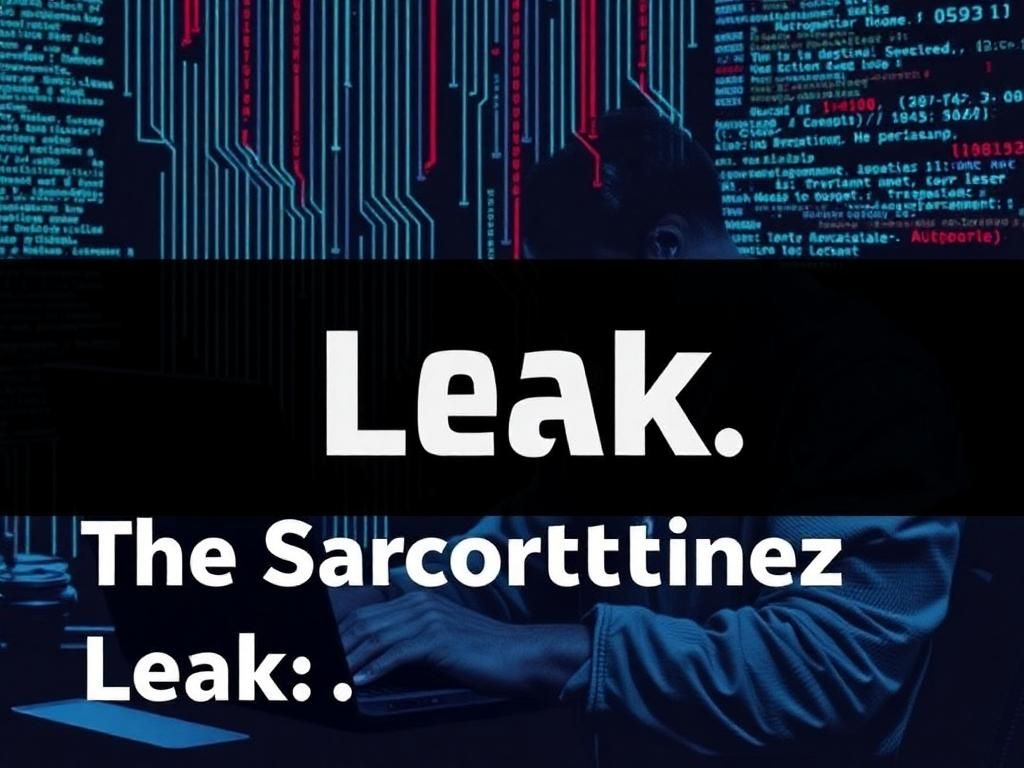The Saracortinez Leak has emerged as a significant event in the digital security landscape, highlighting the vulnerabilities that not only threaten individuals but also jeopardize larger organizations. This breach emphasizes the critical discussion surrounding data privacy, the methods employed by hackers, and the consequential fallout that can ensue. In understanding this leak, its implications on technology and security protocols also come into focus, underscoring why this topic remains a relevant concern for all users and businesses.
Background Information
Historical Context
Before delving deep into the particulars of the Saracortinez leak, it is vital to explore the timeline that led to this pivotal moment. Reports indicate that the initial signs of the breach began surfacing in early 2023, when data inconsistencies were detected across multiple platforms. Key players included both the organizations affected and various cybersecurity firms that worked to assess the damage.
The timeline can be broken down as follows:
- **January 2023**: Initial concerns raised by data analysts.
- **February 2023**: Identification of vulnerabilities in security protocols.
- **March 2023**: Official announcement of the breach.
- **April 2023**: Wider media coverage and public concern began.
Technical Overview
The technical intricacies of how the leak occurred need more attention. Saracortinez leak was facilitated by a combination of human error and inadequate security measures that allowed hackers to exploit existing vulnerabilities in the system. Key technologies affected included cloud storage systems that were thought to be secure but had misconfigured settings that made sensitive data accessible.
The Details of the Leak
Scope of the Leak
The Saracortinez leak involved an alarming range of data types. sensitive personal information, financial records, and confidential business documents were compromised. The estimated quantity of data leaked is staggering, with reports suggesting that millions of records were exposed, impacting countless individuals and organizations.
Methods of Data Exposure
Understanding how the breach was executed provides valuable insight. Multiple methods were identified, including:
- Hacking: Utilizing sophisticated phishing techniques to retrieve login credentials.
- Negligence: Failures in proper security protocols, leading to unintended exposure.
- Insider Threats: Involvement of employees who breached trust for personal gain.
Additionally, vulnerabilities such as weak passwords and outdated software systems were exploited, illustrating significant lapses in security measures.
Reactions to the Leak
Immediate Consequences
The immediate aftermath of the Saracortinez leak saw a fierce reaction from the public and media alike. Users expressed outrage and confusion, pushing for accountability from companies implicated in the breach. Stakeholders, including businesses and individual users, faced a wave of anxiety concerning the safety of their personal data, prompting immediate actions to secure accounts and change passwords.
Official Responses
Responses from companies involved varied but were often centered around damage control. Statements were released addressing the concerns and outlining steps being taken to mitigate future risks. Government entities also reacted by investigating potential regulatory violations, suggesting a stricter approach towards data privacy and security.
Analysis of the Impact
Short-term Effects
The immediate influence of the Saracortinez leak on individuals and companies cannot be understated. Affected users experienced identity theft and financial loss, while companies were forced to implement changes to their security policies quickly. Reports indicated a marked increase in demand for cybersecurity services post-leak.
Long-term Consequences
Looking towards the future, there are anticipations of a transformative shift in regulations governing data privacy. Changes in laws could enforce stricter requirements for how companies handle user data, enhancing compliance measures industry-wide. Furthermore, evolving security measures—like more sophisticated authentication processes—will likely become standard practice across sectors.
Security Implications
Lessons Learned
The Saracortinez leak offers crucial lessons about the necessity of robust cybersecurity frameworks. Key takeaways emphasize that cybersecurity awareness must permeate all levels of an organization to protect sensitive information.
Best Practices for Prevention
To prevent future incidents, companies can adopt several best practices:
- Regularly update software to defend against the latest vulnerabilities.
- Implement multi-factor authentication for an added layer of security.
- Conduct regular employee training focused on cybersecurity awareness.
Additionally, individuals must remain vigilant about securing their personal data, actively monitoring accounts for any suspicious activity.
Future Outlook
Trends in Data Security
Emerging trends in data security suggest a rise in the adoption of advanced technologies designed to anticipate and counter data breaches. Organizations are expected to invest heavily in cybersecurity, leading to innovations that enhance data protection. Predicting the next wave of leaks is challenging, yet an increase in volume and sophistication is likely as technology evolves.
Technology’s Role
As industries grapple with breaches like the Saracortinez leak, advancements in cybersecurity technologies become crucial. Artificial intelligence and machine learning are poised to play pivotal roles in identifying potential threats and mitigating risks. However, the rapid pace of technological advancement also poses new challenges, as hackers continuously develop more sophisticated techniques.
Conclusion
Recap of Key Points
In recapping the Saracortinez leak, it’s clear that this breach has significant implications for data privacy and security practices across industries. The importance of highlighting these vulnerabilities cannot be stressed enough, given their potential ramifications on individual privacy and corporate responsibility.
Call to Action
Readers are encouraged to remain informed and proactive regarding their data security. Whether an individual or a business, staying updated on cybersecurity trends and implementing best practices can serve as a first line of defense against potential breaches.
References
Cited Sources
– Cybersecurity and Infrastructure Security Agency (CISA) – [CISA Cybersecurity Guidelines](https://www.cisa.gov)
– National Institute of Standards and Technology (NIST) – [NIST Cybersecurity Framework](https://www.nist.gov/cyberframework)
Further Reading
– Articles on the evolution of data breaches and impacts on cybersecurity practices
– Expert analyses on future regulations and corporate responsibilities regarding data security

| Incident | Type of Data | Handling Organization | Date | Impact |
|---|---|---|---|---|
| Saracortinez Leak | Personal, Financial, Business | Multiple Organizations | March 2023 | High |
| Example Leak 1 | Emails, Passwords | Company A | 2022 | Medium |
| Example Leak 2 | Medical Records | Company B | 2021 | High |
FAQs
What is the Saracortinez leak?
The Saracortinez leak refers to a significant data breach that exposed sensitive personal, financial, and business information.
How did the Saracortinez leak occur?
The leak occurred due to a combination of hacking, negligence, and insider threats exploiting existing vulnerabilities in digital systems.
What types of data were compromised in the Saracortinez leak?
The data compromised included personal information, financial records, and confidential business documents.
What were the immediate reactions to the Saracortinez leak?
Public and media reaction involved outrage and confusion, leading to calls for increased corporate accountability and better data protection measures.
What long-term changes can be expected after the Saracortinez leak?
Long-term changes may include new regulations regarding data privacy, increased cybersecurity investments, and stronger security measures across industries.
How can individuals protect themselves against data breaches?
Individuals can enhance their privacy by using strong passwords, enabling multi-factor authentication, and regularly monitoring sensitive accounts for suspicious activity.
What best practices should companies adopt to prevent future leaks?
Companies should adopt regular updates of their software, conduct employee training on cybersecurity, and implement strict access controls to sensitive data.
Are there any technological innovations aimed at preventing leaks?
Yes, innovations such as artificial intelligence and machine learning are increasingly being integrated into security systems to detect and respond to threats proactively.
What role do government and regulatory bodies play in response to data leaks?
Government and regulatory bodies are responsible for investigating breaches and may implement new laws and regulations to protect consumer data more effectively.
Where can I find more information about the Saracortinez leak and cybersecurity?
For more in-depth information, consider visiting authoritative sources such as the Cybersecurity and Infrastructure Security Agency (CISA) and the National Institute of Standards and Technology (NIST).
